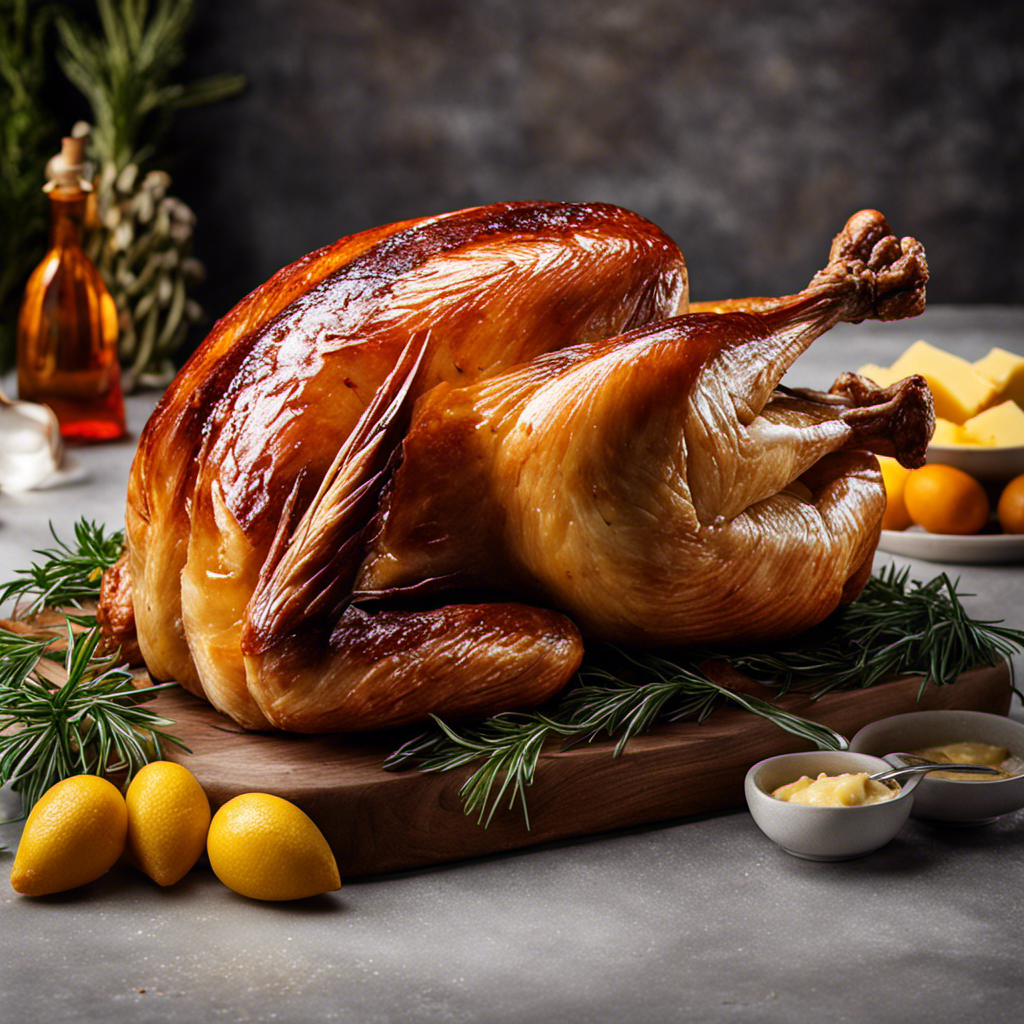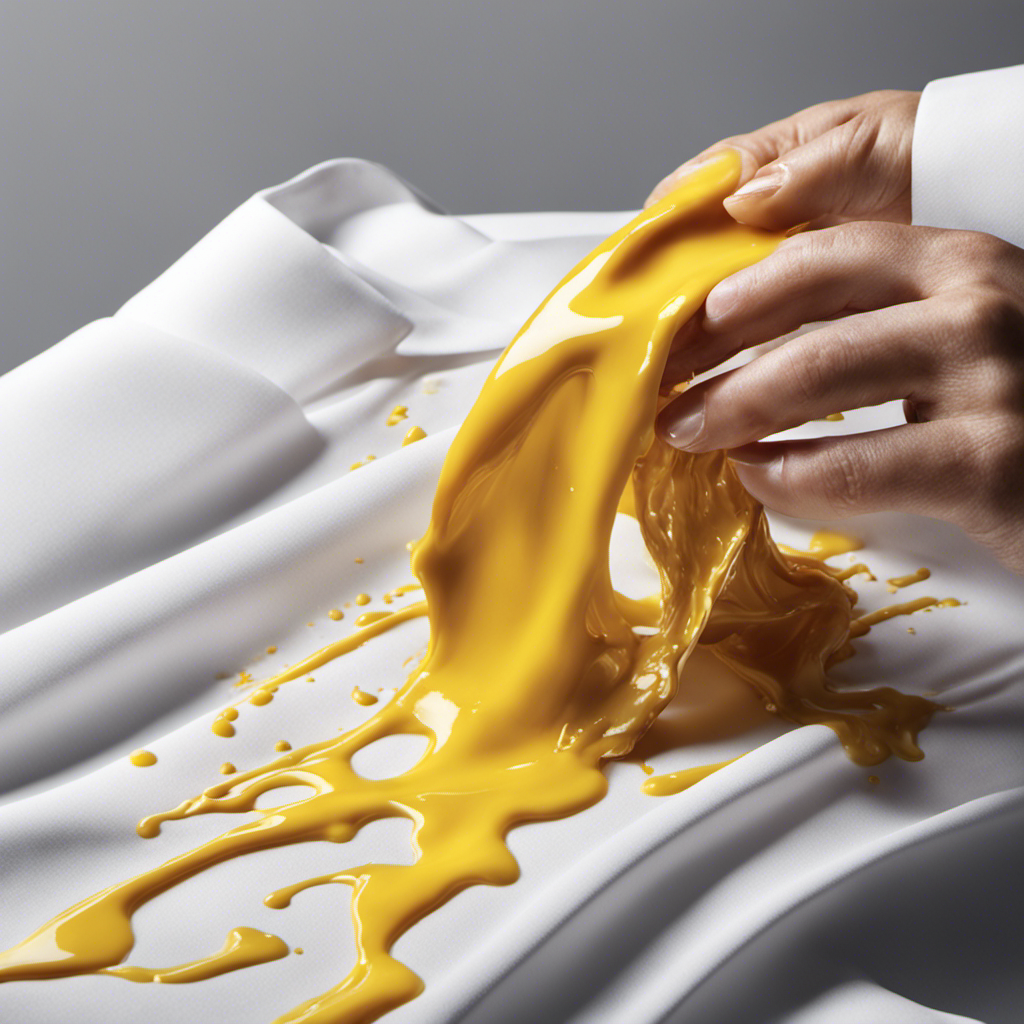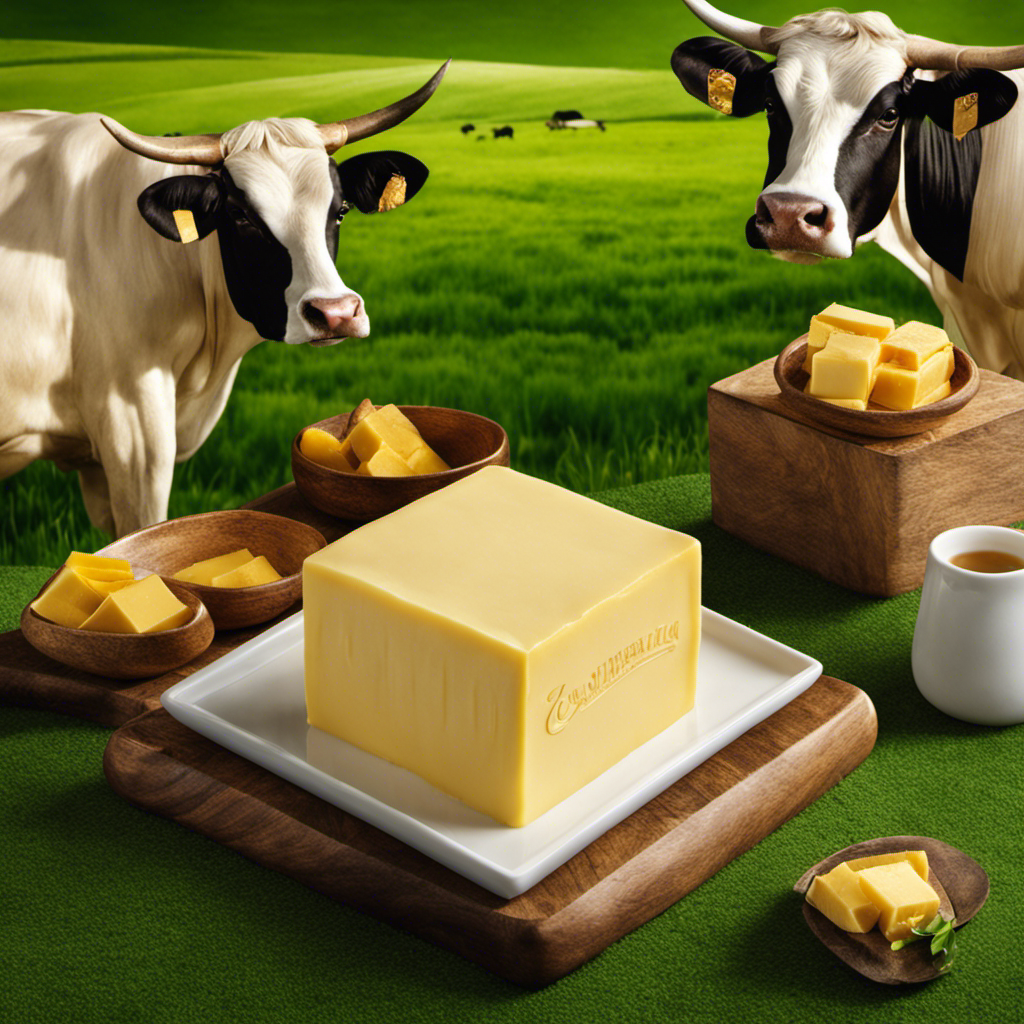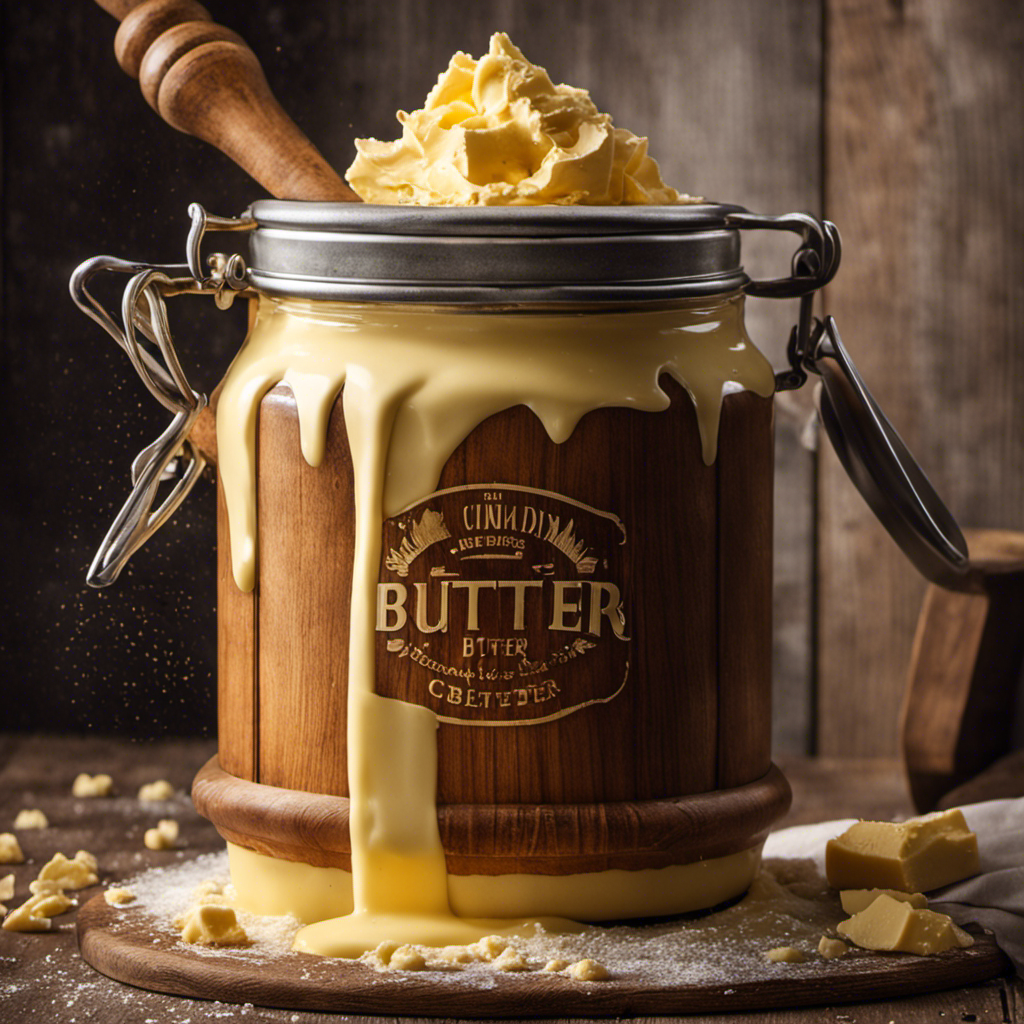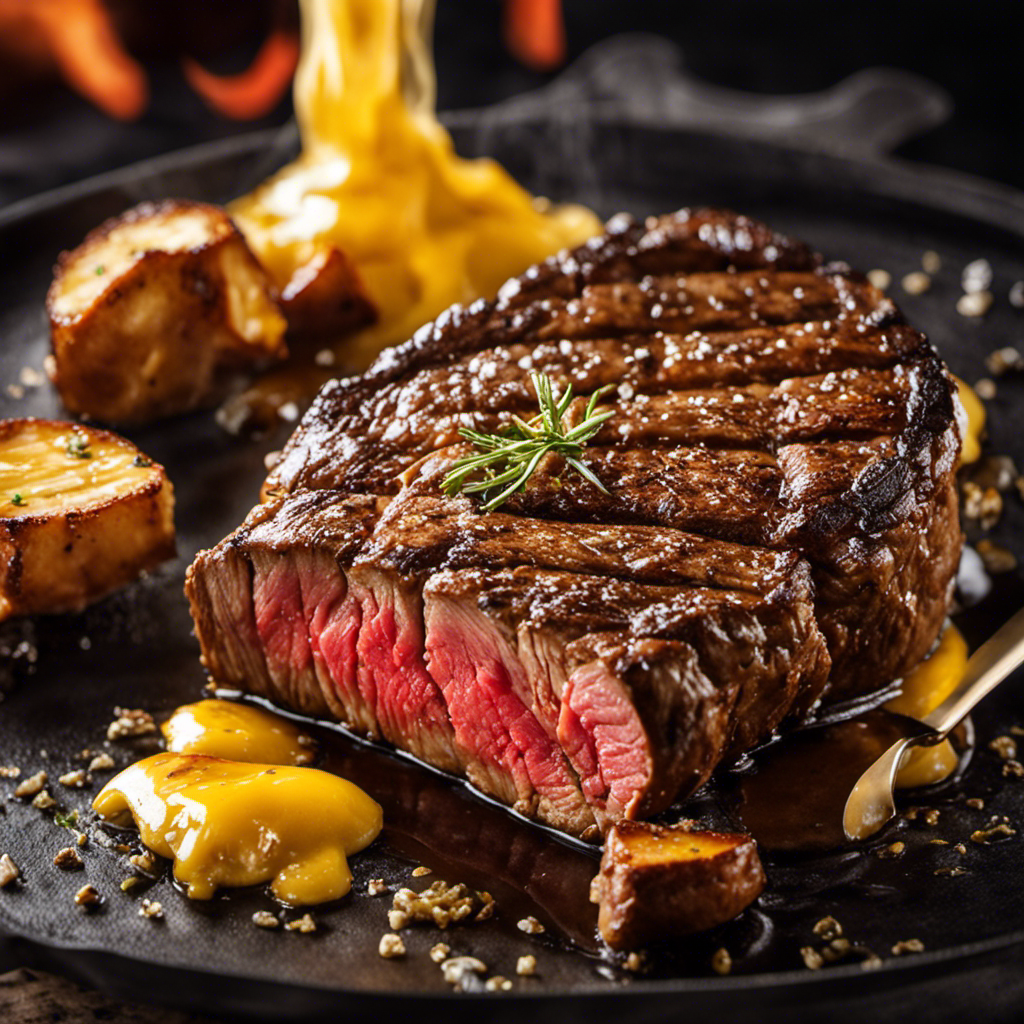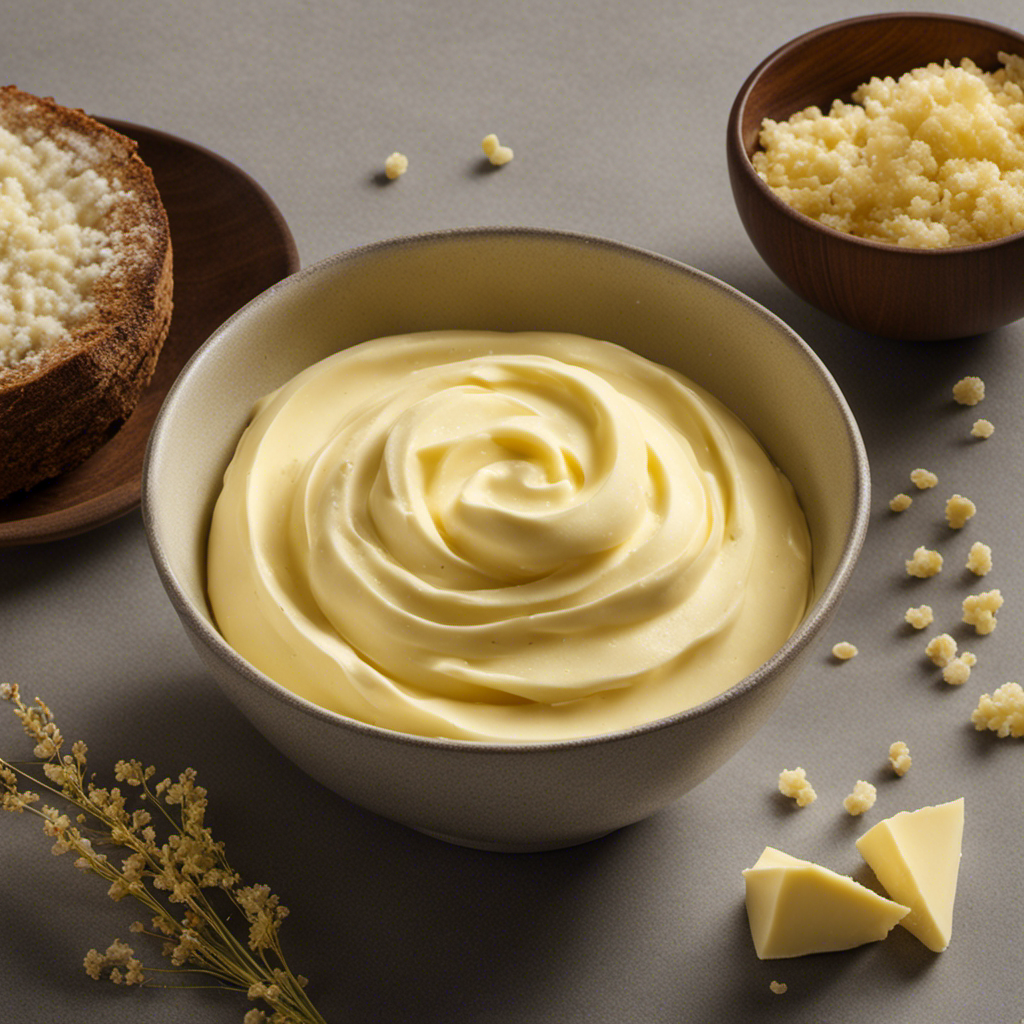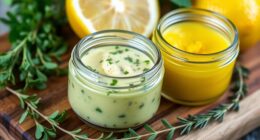As a turkey enthusiast, I have found that adding butter under the skin is like adding a secret ingredient that takes the flavor to a whole new level.
In this article, I’ll share my tried-and-true techniques for achieving perfectly buttered turkey skin every time.
From preparing the turkey to distributing the butter evenly, I’ll guide you through the process step by step.
Get ready to elevate your Thanksgiving feast with this simple yet game-changing trick.
Key Takeaways
- Butter keeps the meat juicy and flavorful.
- Butter helps prevent the meat from drying out by basting it from within.
- Butter adds richness, depth of flavor, and creates a beautiful golden brown and crispy skin.
- Flavored butters and alternative spreads can add a delightful twist to the traditional turkey recipe.
The Importance of Butter Under Turkey Skin
I’ve learned that butter under turkey skin is crucial for keeping the meat juicy and flavorful. The benefits of using butter under turkey skin are numerous.
Firstly, it helps to baste the meat from within, keeping it moist and preventing it from drying out during the cooking process. The butter also adds richness and depth of flavor to the turkey, making each bite a delight for the taste buds.
Additionally, the butter helps to create a beautiful golden brown and crispy skin, adding to the overall presentation of the dish. While there are alternative ingredients for enhancing turkey flavor, such as oil or herbs, butter remains the go-to choice for many chefs and home cooks due to its unmatched ability to enhance the taste and texture of the turkey.
Preparing the Turkey for Butter Placement
To properly prepare the turkey for butter placement, I’ll carefully loosen the skin without tearing it. This step is crucial to ensure that the butter can be spread evenly under the skin, resulting in a moist and flavorful turkey.
Before loosening the skin, though, it’s important to season the turkey with your desired blend of herbs and spices. This will infuse the meat with delicious flavors and enhance the overall taste.
Now, let’s talk about the types of butter you can use for the turkey. While traditional unsalted butter works perfectly fine, you can also experiment with flavored butters, such as garlic or herb-infused varieties, to add an extra layer of complexity to your turkey.
With the turkey seasoned and the butter ready, let’s move on to the next step: techniques for getting butter under the turkey skin.
Techniques for Getting Butter Under Turkey Skin
Once the turkey is properly seasoned, gently slide your fingers between the skin and meat to create a pocket for the butter. This technique allows the butter to melt and infuse the meat with rich flavor as it cooks.
But what if you’re looking for alternative spreads to use instead of butter? Here are some options to consider:
-
Garlic and herb spread: This savory blend adds a burst of flavor to the turkey, enhancing its taste and aroma.
-
Citrus-infused spread: Bright and tangy, this spread provides a refreshing twist to the traditional turkey, making it perfect for those who enjoy a hint of citrus in their dishes.
-
Truffle butter: Indulgent and luxurious, truffle butter adds a decadent touch to the turkey, elevating it to a gourmet level.
-
Herb-infused olive oil: For a healthier option, drizzle some herb-infused olive oil under the turkey skin. It adds a subtle herbaceous taste and keeps the meat moist.
-
Mustard and honey glaze: This sweet and tangy combination creates a caramelized crust on the turkey, adding depth and complexity to each bite.
No matter which spread you choose, the key is to ensure that it’s evenly distributed under the skin, allowing it to melt and infuse the turkey with its delicious flavors.
Tips for Evenly Distributing Butter Under Turkey Skin
Using my fingers, I gently massage the butter between the meat and the skin to ensure even distribution and maximum flavor infusion. This technique is essential for a succulent and flavorful turkey.
But why stop at plain butter? To elevate the taste even further, I like to use flavored butter. Whether it’s garlic, herb, or even citrus-infused, these butters add a delightful twist to the traditional turkey recipe.
However, if you’re looking for a healthier alternative, there are options available. Instead of butter, you can use olive oil or a mixture of olive oil and herbs. These alternatives provide a lighter option without compromising on taste.
Now that we’ve explored different butter options, let’s move on to the final steps for a perfectly buttered turkey.
Final Steps for a Perfectly Buttered Turkey
As I carefully lift the turkey, I make sure to evenly distribute the butter mixture over the entire surface, ensuring a crispy and golden brown skin.
The benefits of using flavored butter for turkey are immense. It adds depth of flavor, richness, and a delightful aroma to the meat. The use of flavored butter elevates the taste profile of the turkey, making it a standout dish on the dining table.
Alternatives to butter for adding moisture to turkey skin include olive oil, mayonnaise, or even a mixture of herbs and spices combined with vegetable oil. These alternatives can also help in achieving a moist and flavorful turkey, while catering to dietary restrictions or personal preferences.
Whichever option is chosen, the key is to ensure that the turkey is well-coated with the chosen ingredient, creating a barrier that seals in moisture and adds a delicious touch to every bite.
Frequently Asked Questions
What Is the Recommended Cooking Time and Temperature for a Turkey?
I always follow the recommended cooking time and temperature for a turkey to ensure it’s perfectly cooked. The cooking time can vary based on the weight of the bird, but a general guideline is to roast it at 325°F until the internal temperature reaches 165°F.
How Long Should a Turkey Be Allowed to Rest After Cooking Before Carving?
After cooking, it’s important to let the turkey rest for about 20-30 minutes before carving. This allows the juices to redistribute, resulting in a moist and flavorful bird. Properly carving a turkey is essential for serving it beautifully.
What Are Some Alternative Ingredients That Can Be Used Instead of Butter for Basting the Turkey?
When it comes to alternative ingredients for basting turkey, oil-based substitutes for butter can be a great option. They add flavor and moisture to the meat, ensuring a delicious and juicy turkey.
Can the Butter Be Flavored With Herbs or Spices Before Placing It Under the Turkey Skin?
Yes, flavored butter can be used under the turkey skin. It adds a burst of delicious herbs and spices to the meat, enhancing the overall flavor. The benefits of using flavored butter are a mouthwatering turkey that will impress your guests.
Are There Any Special Precautions or Considerations to Keep in Mind When Using a Butter Injector to Distribute Butter Under the Turkey Skin?
When using a butter injector to distribute butter under turkey skin, it’s important to consider the size of the injector needle and the consistency of the butter. Special precautions are necessary for a successful outcome.
Conclusion
In conclusion, getting butter under the turkey skin is a simple yet effective technique that can greatly enhance the flavor and juiciness of your Thanksgiving turkey.
By carefully loosening the skin and using a combination of gentle massaging and spooning, you can ensure that the butter is evenly distributed throughout the bird.
This extra step in the preparation process will result in a perfectly buttered turkey that’s sure to impress your guests and make your holiday meal a memorable one.
